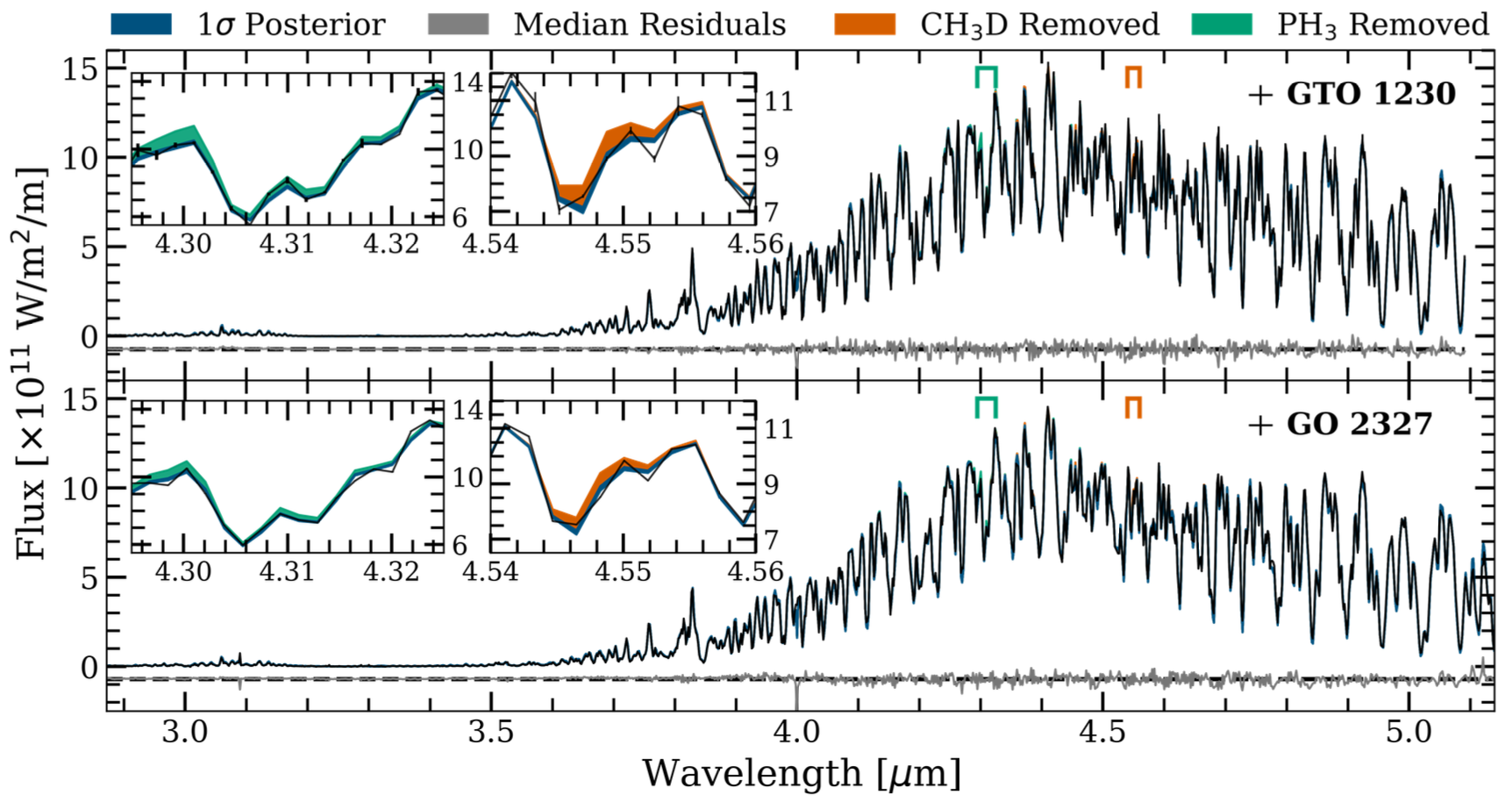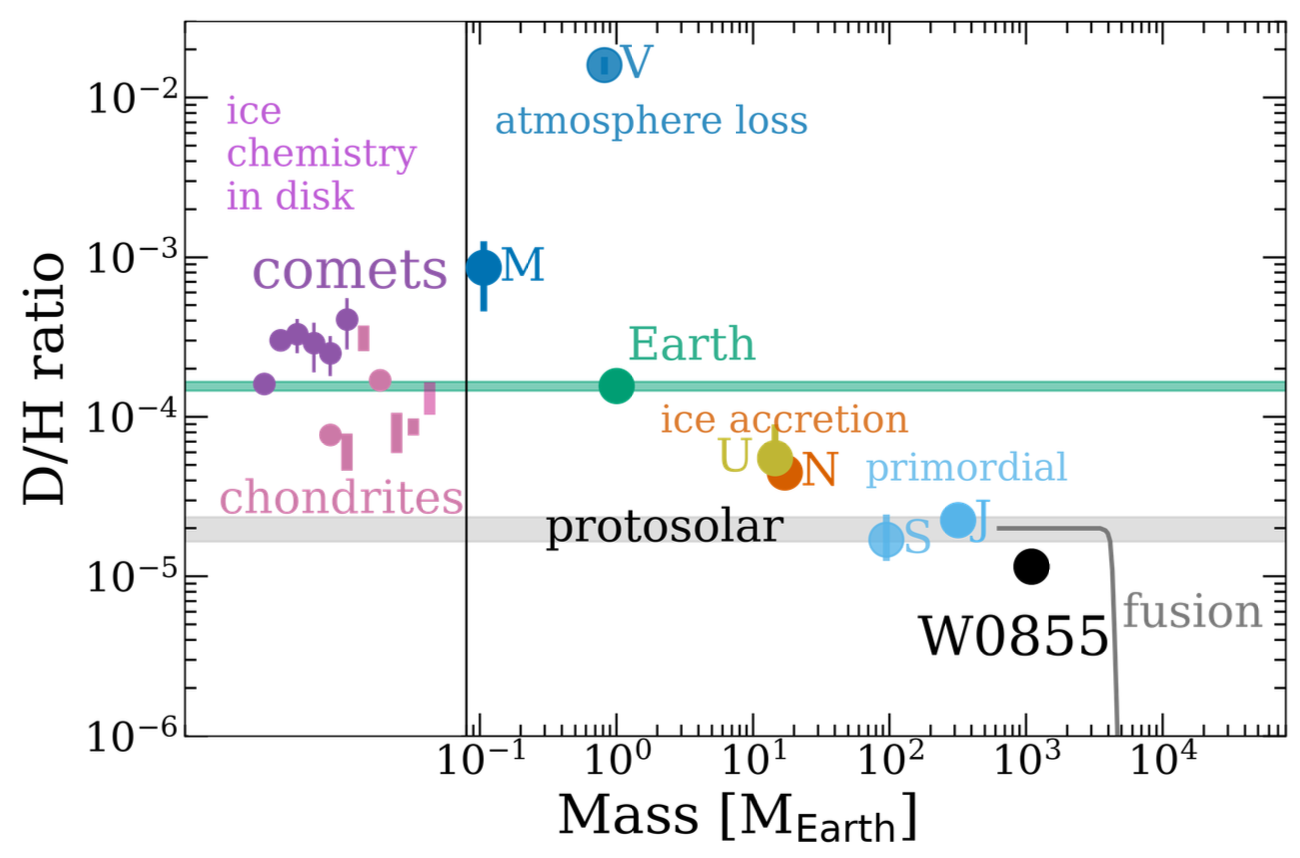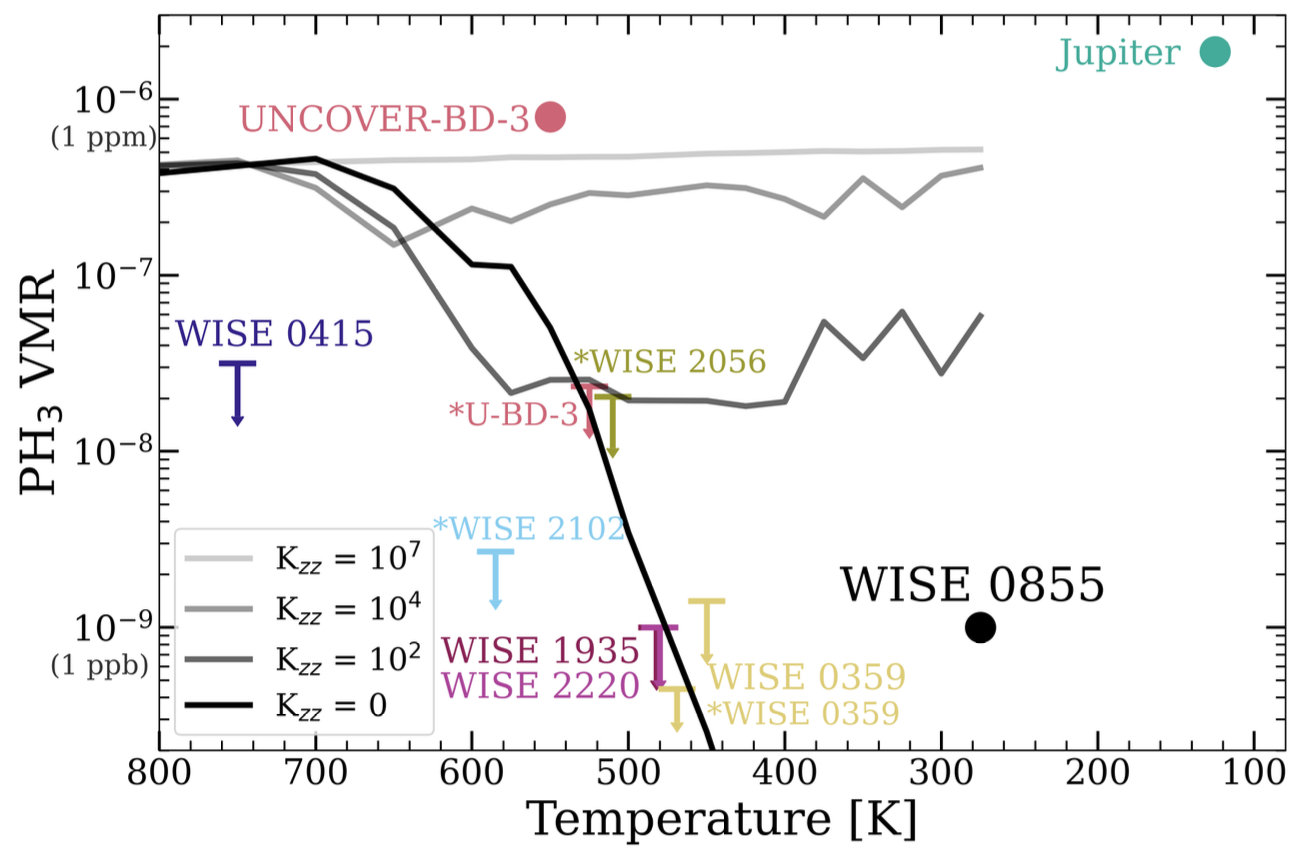Protosolar D-to-H abundance and one part per billion PH3 in the coldest brown dwarf
In Rowland et al. 2024 (in review at The Astrophysical Journal Letters), we detected deuterium (in the form of deuterated methane) in an extrasolar atmosphere for the first time. We also detected phosphine at the one part-per-billion level. We quantify the effective mixing timescale for PH3 and calculate the D/H ratio for WISE 0855, the coldest brown dwarf.
 We detected both deuterated methane and phosphine in two independant data sets of WISE 0855. We performed a suite of retrievals using CHIMERA. The detections were robust to a variety of model assumptions including thermal profile, abundance profile, rotational broadening, and cloud parameterizations.
We detected both deuterated methane and phosphine in two independant data sets of WISE 0855. We performed a suite of retrievals using CHIMERA. The detections were robust to a variety of model assumptions including thermal profile, abundance profile, rotational broadening, and cloud parameterizations.
 Deuterium is a power planet formation tracer within the solar system. The deuterium to hydrogen ratio (D/H) can trace volatile transport within a system, bulk composition, atmospheric escape mechanisms, and mass. We detected deuterium in an extrasolar atmosphere for the first time using retrievals of two independent JWST/NIRSpec G395M spectra. We make predictions for its observabilitly in other atmospheres with JWST spectra.
Deuterium is a power planet formation tracer within the solar system. The deuterium to hydrogen ratio (D/H) can trace volatile transport within a system, bulk composition, atmospheric escape mechanisms, and mass. We detected deuterium in an extrasolar atmosphere for the first time using retrievals of two independent JWST/NIRSpec G395M spectra. We make predictions for its observabilitly in other atmospheres with JWST spectra.
 Phosphine (PH3) is a gas that we predicted to see in T and Y dwarf atmospheres based on thermochemical models. However, only one tenative detection has been made (Burgasser et al. 2023, Beiler et al. 2024b). We detectd and constrained a phosphine abundance at one part-per-billion. The low but constrained abundance in WISE 0855 adds information that will hopefully aid in the identification of problematic elements in the phosphorous chemical reaction timescale network.
Phosphine (PH3) is a gas that we predicted to see in T and Y dwarf atmospheres based on thermochemical models. However, only one tenative detection has been made (Burgasser et al. 2023, Beiler et al. 2024b). We detectd and constrained a phosphine abundance at one part-per-billion. The low but constrained abundance in WISE 0855 adds information that will hopefully aid in the identification of problematic elements in the phosphorous chemical reaction timescale network. We detected both deuterated methane and phosphine in two independant data sets of WISE 0855. We performed a suite of retrievals using CHIMERA. The detections were robust to a variety of model assumptions including thermal profile, abundance profile, rotational broadening, and cloud parameterizations.
We detected both deuterated methane and phosphine in two independant data sets of WISE 0855. We performed a suite of retrievals using CHIMERA. The detections were robust to a variety of model assumptions including thermal profile, abundance profile, rotational broadening, and cloud parameterizations.  Deuterium is a power planet formation tracer within the solar system. The deuterium to hydrogen ratio (D/H) can trace volatile transport within a system, bulk composition, atmospheric escape mechanisms, and mass. We detected deuterium in an extrasolar atmosphere for the first time using retrievals of two independent JWST/NIRSpec G395M spectra. We make predictions for its observabilitly in other atmospheres with JWST spectra.
Deuterium is a power planet formation tracer within the solar system. The deuterium to hydrogen ratio (D/H) can trace volatile transport within a system, bulk composition, atmospheric escape mechanisms, and mass. We detected deuterium in an extrasolar atmosphere for the first time using retrievals of two independent JWST/NIRSpec G395M spectra. We make predictions for its observabilitly in other atmospheres with JWST spectra.  Phosphine (PH3) is a gas that we predicted to see in T and Y dwarf atmospheres based on thermochemical models. However, only one tenative detection has been made (Burgasser et al. 2023, Beiler et al. 2024b). We detectd and constrained a phosphine abundance at one part-per-billion. The low but constrained abundance in WISE 0855 adds information that will hopefully aid in the identification of problematic elements in the phosphorous chemical reaction timescale network.
Phosphine (PH3) is a gas that we predicted to see in T and Y dwarf atmospheres based on thermochemical models. However, only one tenative detection has been made (Burgasser et al. 2023, Beiler et al. 2024b). We detectd and constrained a phosphine abundance at one part-per-billion. The low but constrained abundance in WISE 0855 adds information that will hopefully aid in the identification of problematic elements in the phosphorous chemical reaction timescale network.